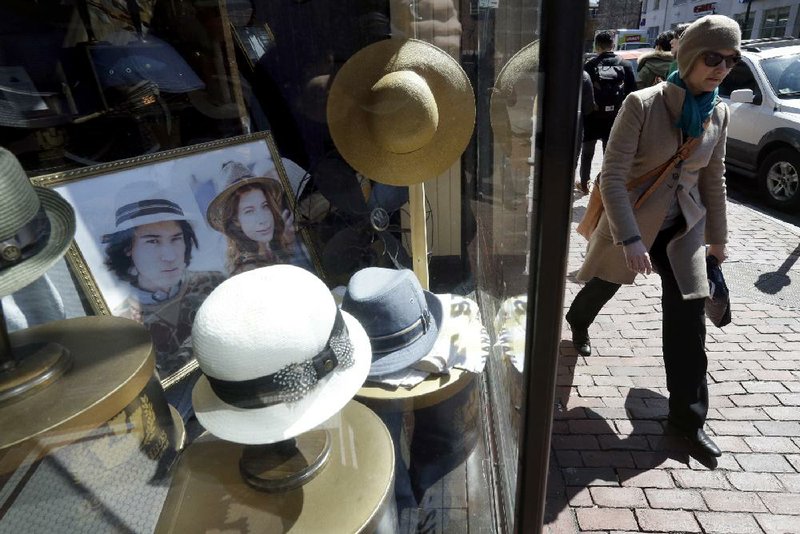WASHINGTON -- U.S. consumers increased spending in March by the largest amount in four months, a hopeful sign that this key sector of the economy is reviving after a frigid winter.
Consumer spending increased 0.4 percent in March, the strongest gain since a similar increase in November, the Commerce Department reported Thursday. Spending fell in December and January before climbing a modest 0.2 percent in February.
Consumer spending, which accounts for 70 percent of U.S. economic activity, should help bolster an economy that barely grew in the first quarter, economists said. The data, combined with other reports Thursday that showed rising wages and a 15-year low in unemployment-aid applications, suggest that while the economy started off slowly, it gained momentum as winter turned to spring.
"What we went through over the first quarter was simply a soft patch related to the weather" and port disputes, said Tom Porcelli, chief U.S. economist at RBC Capital Markets LLC in New York and the top forecaster of consumer spending over the past two years, according to data compiled by Bloomberg. "Ending the quarter on a pretty strong note like spending did is indicative of an economy that seems poised to rebound."
Weekly applications for unemployment benefits dropped 34,000 to 262,000, the Labor Department said Thursday. That's the lowest level since April 2000. The four-week average, a less volatile measure, dipped 1,250 to 283,750, near a 15-year low.
"The trend in claims, below the pre-recession trough, continues to impress," said Derek Lindsey, an analyst at BNP Paribas. It suggests that weak hiring in March "may have been a blip in an otherwise solid trend."
Thursday's reports "all point to an economy that is doing a lot better than the near-stagnation in the first-quarter GDP suggests," said Paul Ashworth, chief U.S. economist for Capital Economics.
The rise in spending came despite the fact that income growth was flat in March. It was the poorest showing in more than a year and a reflection of the fact that job gains slowed sharply in the month.
Consumers, encouraged by warmer weather, pushed up sales of autos, furniture, clothing and building materials during the month.
With spending outpacing income growth in March, the saving rate declined to 5.3 percent of after-tax income, down from 5.7 percent in February.
The government reported Wednesday that the overall economy, as measured by the gross domestic product, slowed sharply in the first three months of the year. GDP grew at an annual rate of 0.2 percent, down from a 2.2 percent rate in the fourth quarter.
A big factor in the disappointing GDP number was a slowdown in consumer spending, which grew by just 1.9 percent in the first quarter. It was the worst performance in a year and down sharply from 4.4 percent gain in the fourth quarter.
The Federal Reserve took note of the weakness in a statement issued Wednesday after its two-day policy meeting. But it noted that some of the factors that curtailed growth in the first quarter were likely to be temporary.
The Fed officials kept a key interest rate at a record low near zero. They reiterated that they did not plan to raise rates until labor markets strengthened further and they are confident that still-low inflation will move back closer to the Fed's target of 2 percent.
The new report on spending showed that the Fed's preferred inflation gauge rose just 0.2 percent in March and is up just 0.3 percent from a year ago. That is far from the Fed's target of 2 percent annual gains in this inflation measurement, which is tied to consumer spending.
This measure of inflation has been running below 2 percent for nearly three years and has fallen further from the Fed's target in recent months. The slide reflects big declines in energy prices and a stronger dollar, which lowers the cost of imported goods. Excluding food and energy, inflation is up 1.3 percent over the past 12 months.
Many economists believe the Fed will keep rates unchanged over the next two meetings in June and July with the first rate increase not occurring until September at the earliest.
Information for this article was contributed by Martin Crutsinger and Christopher S. Rugaber of The Associated Press and by Victoria Stilwell of Bloomberg News.
A Section on 05/01/2015
